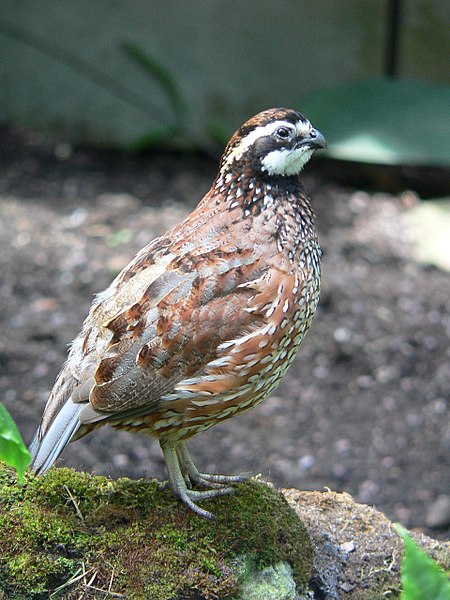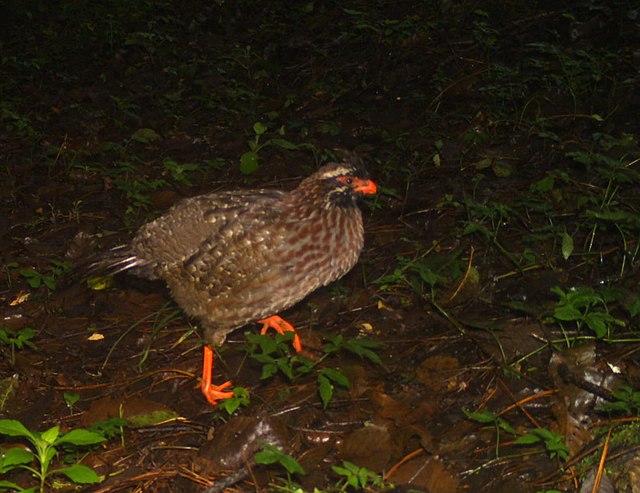The northern bobwhite, also known as the Virginia quail or bobwhite quail, is a ground-dwelling bird native to Canada, the United States, Mexico, and Cuba, with introduced populations elsewhere in the Caribbean, Europe, and Asia. It is a member of the group of species known as New World quail (Odontophoridae). They were initially placed with the Old World quail in the pheasant family (Phasianidae), but are not particularly closely related. The name "bobwhite" is an onomatopoeic derivation from its characteristic whistling call. Despite its secretive nature, the northern bobwhite is one of the most familiar quails in eastern North America, because it is frequently the only quail in its range. Habitat degradation has contributed to the northern bobwhite population in eastern North America declining by roughly 85% from 1966 to 2014. This population decline is apparently range-wide and continuing.
Image: Virginiawachtel 2007 06 16 065
Image: Northern Bobwhite female RWD
Plate 76 of Birds of America by John James Audubon depicting Virginian Partridge.
Egg
The New World quail are small birds, that despite their similar appearance and habits to the Old World quail, belong to a different family known as the Odontophoridae. In contrast, the Old World quail are in the Phasianidae family. The geographical range of the New World quail extends from Canada to southern Brazil, and two species, the California quail and the bobwhite quail, have been successfully introduced to New Zealand. The stone partridge and Nahan's partridge, both found in Africa, seem to belong to the family. Species are found across a variety of habitats from tropical rainforest to deserts, although few species are capable of surviving at very low temperatures. There are 34 species divided into 10 genera.
New World quail
Image: Stone Partridge
Image: Oreortyx pictus
Image: Dendrortyx macroura 27737108








